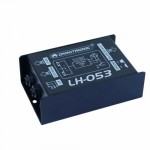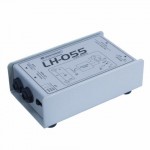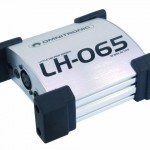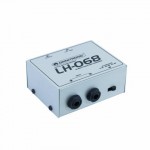Little Helper from Omnitronic – Part I

Let’s talk about the so called „Little Helpers“ from Omnitronic. They have already simplified or even saved quite a few events. In the first part of our series we are concentrating on devices which can rather be found on live settings. Installation and studio environment are the topics of the second part.
It is probably the absolute classic assistant in event industry: the DI-Box (DI means “direct injection”, sometimes also “direct input”). On live stages the DI-Box has to complete three missions at once. First of all, impedance transformation. To directly supply a signal from keyboards, synthesizers, electric guitars or basses into the multicore and finally into the FOH mixer, the very high-resistant output impedance of these instruments has to be transformed. Normally, an electric guitar has an output impedance of several thousand ohms whereas a microphone features only a few hundred ohms. Now, the DI-Box, from a technical point of view, transforms an instrument signal into a microphone signal – thus preparing the signal for further processing in a mixer. The inputs of the instruments’ amplifiers are equipped accordingly and thereby don’t have to be supplied with a transformed signal. Because of this it is possible to simultaneously tap the input signal of the DI-Box and to feed it into the amplifier, which is mostly used as stage monitor.
Another mission: balancing the usually unbalanced signal of an instrument. Dual signal routing can minimize various interfering factors on the way from stage to FOH. By inverting one of the two signals and by reinverting one signal, followed by a sum of both signals, any negative influences can be filtered out.
The third effect of a DI-Box: galvanic isolation of the signal ground via the integrated transformers. A very helpful feature, especially for avoiding ground loops. This counts when stage and FOH are on different circuits, when there is a different ground potential (resistance to the protective earth) and hence equalizing currents are flowing through the earth lead. A splitting function to separate the input signal in two output signals and a Pad button for lowering the signal (mostly in steps of 10 or 20 dB) are additional characteristics of a typical DI-Box.
Omnitronic has diverse DI-Boxes for different applications in its assortment. The LH-053 is the most low-priced version. It is perfect for instruments with active sound control and with integrated preamplifier respectively. Such instruments are keyboards, guitars with piezo pick-up and many bass guitars. With the LH-053 musicians and organizers who are not among the richest are offered an opportunity to sidestep common problems on stages with low budgets – without having to accept losses in the sound quality. And being the only black-colored DI-Box in the assortment, the LH-053 plays the antihero compared to the other versions which are silver-colored. The LH-055 is high-quality and thanks to better components, the measured loss of the signal level is even smaller. This is why it can also be recommended for passive guitars and basses. Dealing with instruments which show high levels, the LH-065 is an attractive option. Active components of the LH-065 can compensate any signal losses caused by the fabricated parts. The LH-068 does not need any power pack or accumulators. It is the mixer’s phantom power which delivers the power supply for this active DI-Box.
Stereo sources such as keyboards, many multi-effect processors of guitars and basses as well as premixes out of cheap stage mixers should trust the several stereo DI-Boxes: LH-060 (passive), LH-070 (active with XLR-in) and LH-071 (active with jack/XLR-in).Moreover, they are able to split the input signal on two outs. Quite useful when you like to control the FOH and the monitor mixer for example.
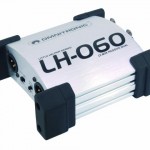
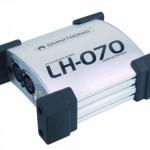
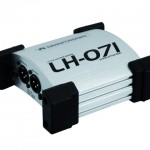
When it comes to galvanic isolation of the signal ground via well-priced isolators, Omnitronic offers three models with different connectors: The LH-080 has two symmetrical jack plugs, the LH-081 with RCA plugs and the LH-082 XLR plugs. They all help to avoid interferences and ground loops. Normally these isolators are inserted into the signal path – between small mixers and amplifier racks. But they can also decouple players (laptop etc.) at the FOH from the mixer.

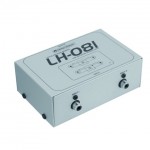

Also of vital importance for any technician: cable testers. Everybody who has already been trying to find a damaged cable in a strongly branched DMX universe does not want to renounce such an assistant – at the latest after having looked for the failure with a ladder some meters above ground or when the roof of a trussing had to be lowered again to check the cables. Time loss due to the search is not necessary and uneconomical. That is why Omnitronic has two testers in its program. With plugs for XLR, RCA, jack, five pole DIN (MIDI) as well as four pole speaker cables, the LH-085 is the basic version. It also shows banana sockets for testing the diodes (continuity via LED display and signal sound). Due to the LED display of all contacts, not only disruptions of the signal way can be detected. Short circuits and phase rotations can be recognized, too.
The bigger brother of the LH-085 is the LH-086. In addition, it offers plugs for mini jack, five pole XLRs, eight pole speaker leads and CAT5 cable. It is the yellow version, called LH-088, where CAT5 plugs are replaced by Mini-DIN 4 (S-Video).
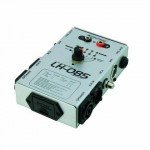


Polarity tester systems are essential helpers as well. They can examine the phase of the whole signal way with short, pulsed signals. One Omnitronic representative: the LH-090, which consists of two units – a transmitter and a receiver. While the transmitter shows one signal output and a small speaker, the receiver is equipped with a signal input and a small microphone. It is therefor possible to check the whole signal way from the stage microphone to the PA speakers. There is also the option to insert transmitter and receiver into the signal processing at any desired place.
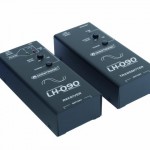
Testing speakers and other components without amplifiers or players, you need signal generators like the LH-095 and LH-100. The LH-095 offers the possibility to control the speakers’ functions already in the store, when taking back dry-hire products for example. To do so, outputs for line levels (XLR) and power outputs (speaker and banana) are available. The generator’s sine frequency can be used for the whole audio range from 20 Hz to 20 kHz, to specifically review all single speakers. With the useful belt clip, the little helper is always close and ready for use. The LH-100 features sine and rectangle wave forms through separated output sockets and hence is especially suitable for the control of mixers and amplifiers, but also of speakers. For external signal sources the LH-100 can be recommended as preamplifier.
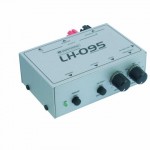
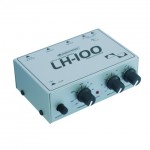
The LH-110 is a switch box and developed for guitar applications. Either two guitars can be connected to the same amplifier or two amplifiers or different effect ways can be connected to one guitar. Via the two foot switches the preferred operating modes can always be chosen even whilst playing. Guitarists may change signal ways between chorus and verse for example.
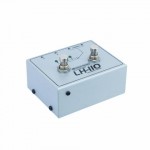
The second part of our Little Helper series.



